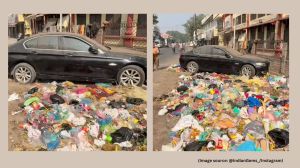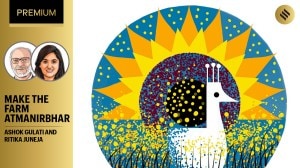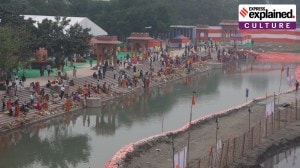Nineteen years of strife
Nineteen years after the United Liberation Front of Asom (ULFA) was formed, and eight years after it was banned, the Government is still not...

Nineteen years after the United Liberation Front of Asom (ULFA) was formed, and eight years after it was banned, the Government is still not sure how to settle the issue of insurgency in the State. Or how to get the 250-odd leaders of the outfit out of the forests of Bhutan.Governments over the years have been blaming the lack of development in the State as one major reason behind the rise of insurgency in Assam.
George Fernandes, the Defence Minister, also made a similar remark, while embarking upon a week-long tour of the strife-torn region. And State Chief Minister Prafulla Kumar Mahanta, who says he was not in favour of causing another split in the ULFA as did his predecessor Hiteshwar Saikia, has now pushed the ball into the Centre’s court.
“The counter-insurgency operations launched by the police and other security forces have put considerable pressure on the militant groups, but force alone cannot tackle this problem,” said Mahanta last week, informing Prime Minister Atal Behari Vajpayee that hisgovernment would render all possible help to the Centre in initiating a dialogue with the rebel groups.It is a fact that the willingness on the part of the governments, both in the State and at the Centre, has been expressed off and on since 1991, within months of banning the ULFA but, except for one attempt by Hiteshwar Saikia, no sincere effort has been actually seen so far. Saikia’s efforts too have gone in vain, because, while the more hard-core section of the militants refused to come overground, those who did turned out to be a pack of goons who indulge in anti-social activities.
While two major Army operations, operation Bajrang and Operation Rhino did not succeed in crushing the ULFA, the AGP-led government’s Unified Command, launched in January last year with “better coordination” among the various security forces have made some impact. IIncidents of extortions have come down, killings, however, continue, but the most significant aspect is that the top rung of the group, including the best of itsstrike-force members, have been driven away to Bhutan.The Army claims that about 250 rebels, including some women cadres, are holed up inside Bhutan, where the ULFA had set up its general headquarters, while general secretary Anup Chetia is lodged in custody in Bangladesh since December. “They are cut off from their district-level cadres, while the camps are running short of funds and supply,” a senior Army officer, who is directly responsible for monitoring the ULFA hideouts from this side of the Indo-Bhutan border, said.
The ULFA, however, denied this. “We are in full control. There is no communication gap. The leaders are in constant contact with one another. No force can finish off the ULFA,” said Mithinga Daimary, the central publicity secretary of the outfit.The ULFA meanwhile has effected a number of changes in its organisation set-up since its inception in 1979, the most significant being the creation of a “regular army”, as the amendment of its constitution, effected in November 1995 says.According to this, while the United Liberation Front of Asom (ULFA) as a whole became the “political party”, the armed wing was christened United Liberation Force of Asom. While the Force has a typical regular army hierarchy, the districts too were reorganised as regions, the entire State being divided into five regions.
That the fund flow to the group has become restricted with the government coming down heavily on the big business houses, which included a crackdown on Tata Tea and Williamson and Magor, the two tea giants of the country, last year, while recent trends showed that the smaller businessmen were coming to the police more often than before to lodge complaints about extortion notices. In Guwahati alone, several such cases were reported to the police in the past few months, leading to capture and elimination of a number of militants.
The Army meanwhile has launched what it described as a psychological operation (Pay-Op) consisting of developmental activities, recruitment drives, medicalcamps and so on to wean away the common man from ULFA.The Army says some of the rebels in the camps in Bhutan are also feeling frustrated. “They are living a horrible life in the camps, spread over an area of about two square kilometres,” said a senior Army officer. He quoted from intercepted letters written by rebels living in the camps to their families or comrades, which gave descriptions of the camp life.
One such letter, written by Raju Gogoi to his sisters Sonmoni and Jonomoni as recently as on February 22, said: “We cannot go out from here according to our wish. The condition here is not very good. We are surrounded by Indian hyenas on all sides. They will attack us once we step out…Time has become very rude to us. We are spending our time here amid laughter and tears. I don’t know when the good days will come. Maybe, the entire life will pass this way.”Sangita Saud, a self-styled woman sergeant has written a letter which reveals her frustration. “I am no longer that elder sister of yours. Iam just a Sangita robbed of her personality and individuality…
I had great dreams of doing something for the people, but the organisation has not been able to give us anything,” wrote Sangita to her sisters back home.The Government has set in motion the process of building up channels for possible talks with the militants and Fernandes has said he is willing to go to any length and talk to the ULFA leaders to know their mind. But a viable solution still eludes the Government, and the State continues to reel under tension, with the common man getting caught in the crossfire.



- 01
- 02
- 03
- 04
- 05




























